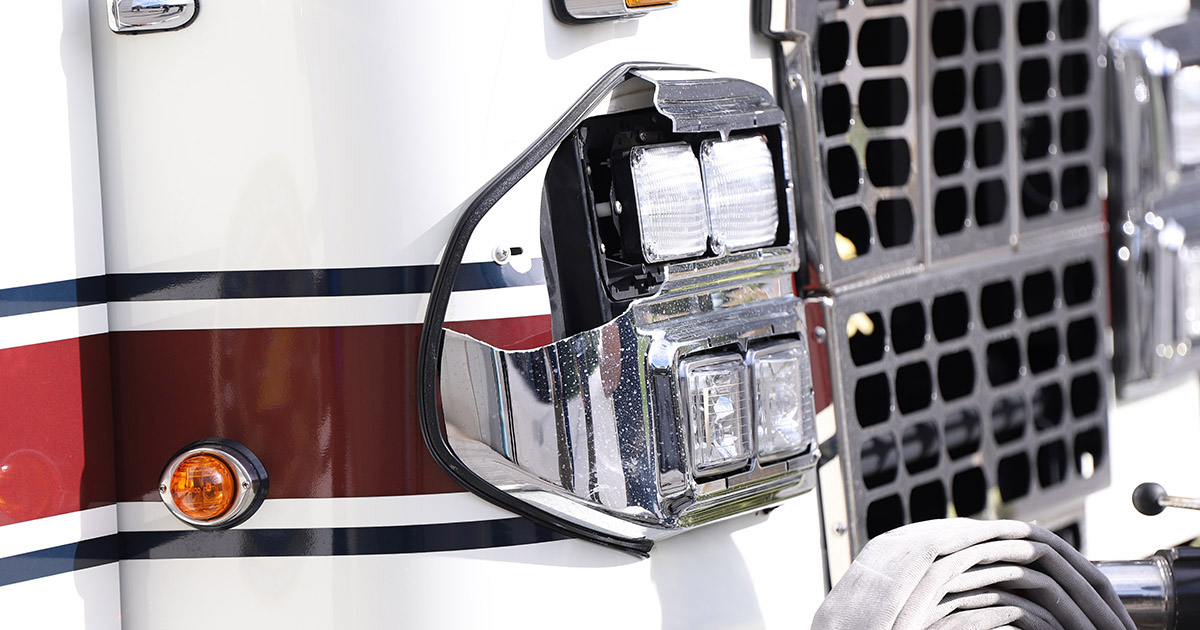Quick tips from the experts to help you live a long and healthy life.
As emergency responders, you’re often thought of as brave, strong and tough (and rightfully so)—but the challenges you face head-on can be equally tough. It’s no secret that hard days can take both a physical and mental toll. All too often, however, people who are so selflessly motivated overlook key warning signs about their own well-being. With so much focus on serving others—the rest gets swept under the rug.
While all emergency responders put their hearts at risk due to the extreme demands of their jobs, firefighters have shown to be especially susceptible to heart attacks due to their exposure to extreme heat.
• According to an article form Medical News Today, when exposed to extreme heat, firefighters could more easily injure their heart muscles.
• It was found that under extreme heat conditions, firefighter’s risk of blood clotting increased not just in response to the physical exertion of the job but to the high temperatures as well.
• In 2017, 50 firefighters died from heart attacks according to the U.S. Fire Administration’s annual report.
If you’re in a position where you regularly put both your mind and body on the line—how can you best protect yourself? How can you help protect your heart against these stunning statistics?
There are a few important things that you can incorporate into your daily routine to help keep your heart at its best:
1. PERFORM YOUR DUE DILIGENCE
Research in the Journal of the American Heart Association showed that firefighters who died from cardiac arrest were much more likely than those who died of other causes to show signs of both atherosclerotic and hypertensive heart disease. Look for these things. Keep tabs on your heart health by visiting a cardiologist or undergoing regular screenings to check for problems. Ensure through annual, routine physicals that you’re healthy enough to do the more strenuous parts of your job. Heart health screening most commonly focuses on finding risk factors for coronary artery disease. This screening should be considered absolutely essential, but it’s also important to have your doctor consider testing that could identify an enlarged heart or increased thickness of the heart’s walls.
2. BE PROACTIVE
While staying up-to-date on your heart health, also consider regular checks on your blood pressure and cholesterol levels. High blood pressure has long been known as a major risk factor for both heart disease and stroke, and is also very hard on your kidneys. High cholesterol contributes to the clogging of arteries by plaque. Experts recommend always knowing your blood pressure numbers, and heart.org offers a blood pressure tracker to help you do so. Find it at: ccctracker.com. To keep cholesterol low, a blend of a heart-healthy diet, exercise, staying away from smoking and maintaining a healthy weight is recommended. Monitoring your cholesterol and blood pressure levels regularly—even before there’s ever a concern—can help you to be proactive rather than reactive, and take better charge of your overall health.
3. GET ACTIVE
Another step to proactive prevention of heart disease comes from—you guessed it—exercise. While the day-to-day routine for emergency responders can be strenuous and exhilarating, some extra (for fun) exercise is needed. Not only is down-time exercise shown to battle PTSD, depression and anxiety, it has been proven to increase both length and quality of life. The hardest part is finding the energy to get started, but once you make it a routine (aim to make it past the 21-day mark,) you might just find yourself addicted.
4. CHOOSE SMART FUEL
Emergency responders are the epitome of “on-the-go.” And we all know how difficult healthy eating can be on a busy schedule—but the value of it far outweighs any pre-planning burdens that it might cause. Plan a healthy diet full of nutrients, and take vitamin supplements when necessary. This will boost your heart, your brain and your energy levels. Try to avoid consuming too much sugar (even the secret stuff that’s hidden in carbohydrates). Stick with whole, farm-fresh foods when you’re able. Your body will greatly thank you.
5. MAKE IT A TEAM EFFORT
You work in a brotherhood—and boy is it strong. Use those bonds and friendships to hold your whole crew accountable for taking action to attain better health. Keep track of how each person is doing and provide support for those who could use it. If you need some motivation, the American Heart Association offers all sorts of resources, from posters to flyers to incentivizing reports.
Challenge your team to get heart healthy together. Maybe make it a competition—whatever works best to motivate people and get them thinking—just a little—about themselves.
Looking for more ways to promote health and safety in your fire department?
Watch our video with 9 station decontamination steps to consider in your fire department:

Lindsey Elias, Marketing
As our Marketing Content Manager, Lindsey is passionate about producing quality content. When not at the office or planning her next Disney getaway, she loves hanging with her husband, family and fur babies and indulging in the two c's: carbs & coffee.
DISCLAIMER
The information contained in this blog post is intended for educational purposes only and is not intended to replace expert advice in connection with the topics presented. Glatfelter specifically disclaims any liability for any act or omission by any person or entity in connection with the preparation, use or implementation of plans, principles, concepts or information contained in this publication.
Glatfelter does not make any representation or warranty, expressed or implied, with respect to the results obtained by the use, adherence or implementation of the material contained in this publication. The implementation of the plans, principles, concepts or materials contained in this publication is not a guarantee that you will achieve a certain desired result. It is strongly recommended that you consult with a professional advisor, architect or other expert prior to the implementation of plans, principles, concepts or materials contained in this publication.
This blog post may contain the content of third parties and links to third party websites. Third party content and websites are owned and operated by an independent party over which Glatfelter has no control. Glatfelter makes no representation, warranty, or guarantee as to the accuracy, completeness, timeliness or reliability of any third party content. References to third party services, processes, products, or other information does not constitute or imply any endorsement, sponsorship or recommendation by Glatfelter, unless expressly stated otherwise.
Related posts
We asked 10 members of our VFIS Team to name one auto-related risk that they believe is underdiscussed in fire and EMS agencies. Here’s what they said.
Most volunteer fire departments rely heavily on POVs, but there are inherent risks you should know.
Establish a Emergency Vehicle Operations Program that includes driver/operator requirements to help ensure your vehicles are in the right hands.









Submit a Comment